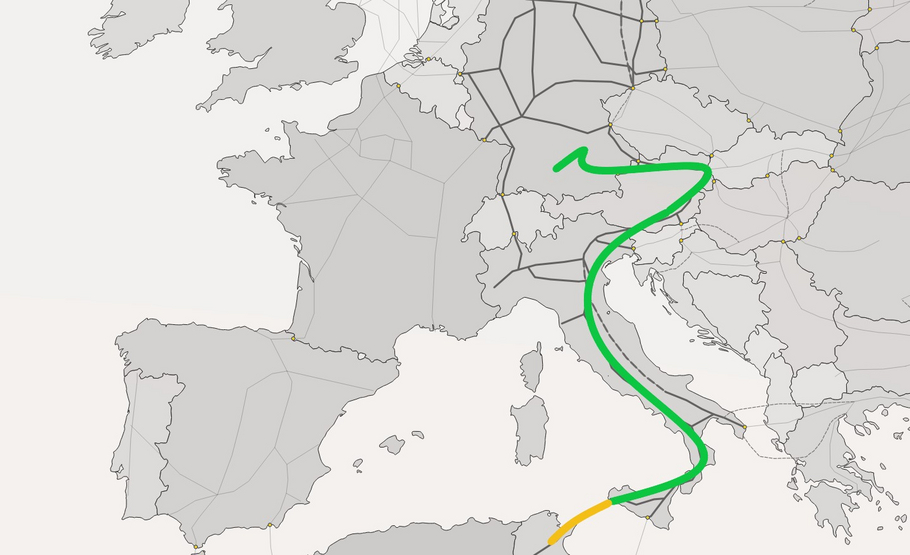Projects of Common Interest (PCIs) are identified every two years by the European Commission as important cross-border infrastructure projects linking the energy systems of EU countries. PCI projects benefit from accelerated authorisation and implementation procedures and, under certain conditions, access to European funding from the Connecting Europe Facility (CEF).
With the "H2 Backbone WAG + Penta West" project, Gas Connect Austria is a key part of the SoutH2 Corridor. Due to its central location, the project is important for the future transport of hydrogen along the Southern Hydrogen Corridor. It provides a link between North Africa, Italy, Austria and Germany. With the planned conversion and expansion of the WAG, hydrogen could be supplied from the south, in particular to industrial clusters in Austria (e.g. Vienna, Styria and Linz), but also to neighbouring regions such as Bavaria, could be supplied with climate-friendly hydrogen.
The SoutH2 Corridors is a hydrogen pipeline corridor that is currently being developed by the European Transmission System Operators (TSOs) Snam (Italy), TAG and GCA (Austria) and bayernets (Germany). It comprises some 3,300 kilometres of pipelines and several hundred megawatts of compression capacity, that will be turned into hydrogen plants by 2030. The development of the SoutH2 Corridor, which is part of the European Hydrogen Backbone (EHB), will ensure security of supply and is crucial for the development of a connected and diversified hydrogen backbone in Southern and Central Europe. With a hydrogen import capacity of 4 million tonnes per year from North Africa, the corridor could meet more than 40% of the overall import target set in the REPowerEU plan.
The initiative focuses on the use of existing natural gas infrastructure that has been converted for hydrogen transport, including additional new construction where necessary. A high proportion of repurposed existing pipelines (more than 70%) will ensure security of natural gas supply in the medium to long term while enabling costeffective production and transport of hydrogen. At the same time, access to favourable sites for the production of hydrogen from renewable energies (wind and solar) in the southern Mediterranean region (southern Italy, Tunisia and Algeria) will be ensured.
The partners have collected declarations of support for several megatonnes from renewable hydrogen producers. In addition, the Corridor has received strong support from off-takers and storage operators along the entire route, serving hard-to-abate clusters in Italy (e.g. Augusta, Taranto and Northern Italy), Austria (e.g. Styria, Vienna and Linz) and Germany (e.g. Burghausen and Ingolstadt).
As proof of the corridor's significant contribution to security of supply and the EU's decarbonisation targets, the energy and environment ministries of Italy, Austria and Germany have signed a trilateral letter expressing their political support.
More information on the initiative is available at https://www.south2corridor.net/

